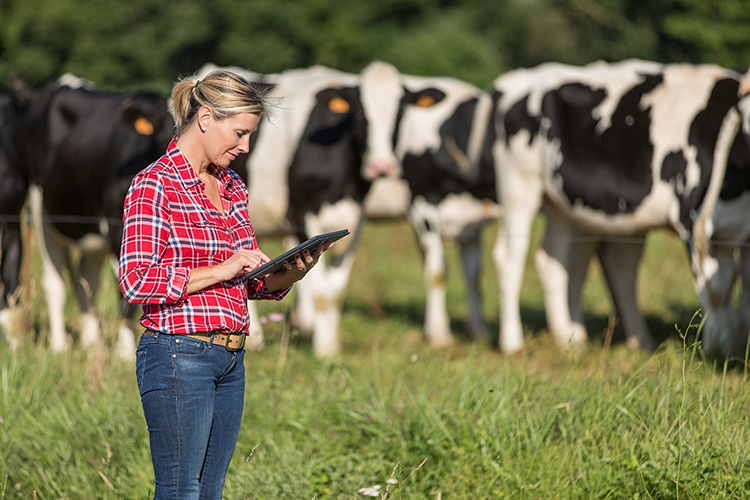
No person – man or woman, adult or child – is immune to the safety and health risks that come with living, working, or visiting a farm. While most precautions pertain to anyone on the farm, safe working conditions don’t fall into a “one size fits all” mold. During a Penn State Dairy Workforce Focus Webinar, county-based dairy extension educator Ginger Fenton discussed safety risks for different populations, one of them being women.
“Women play a vital and often overlooked role on many farms,” Fenton said, noting that women’s contribution to agriculture may be underreported in U.S. census data. She said that is partly due to women considering themselves as “helpers” or “farm wives” and not operators of the farm. However, Fenton pointed to a study where 50% of female respondents considered themselves to be homemakers, but 40% of them regularly worked with animals and 30% operated tractors.
“Many of these women make a substantial contribution to the farm,” Fenton emphasized.
Some women work long hours on and off the farm, and Fenton called this the “third shift phenomenon,” describing the fatigue that comes from trying to balance off farm work while also working in the home and on the farm.
The type of operation may dictate the role a woman plays on the farm, Fenton said. According to U.S. census data, dairy and livestock operations are more likely to utilize women. On these farms, workers face a high volume of animal contact, and activities such as milking and cleaning come with higher risks of illness or injury due to equipment operation or exposure to pathogens.
Age is another risk factor. Fenton shared that the average age of female farmers is 57.1 years old. This means many women are dealing with conditions and changes in abilities that go along with aging.
In addition, some personal protective equipment (PPE) may not be designed to fit women. The same goes for the design of certain machinery.
Fenton also pointed out a few health risks specific to women. Some of these include reproductive health; for instance, pregnant women may have increased risk due to changes in immunity and physiology that go along with pregnancy. In addition, certain activities may have effects on the fetus we don’t know about, and some treatments for illness or injury may not be appropriate for pregnant women. Fenton also noted that there are some zoonotic diseases that seem to affect females more than males.
Another at-risk population worth mentioning that could include females or males is the “infrequent farmer.” Fenton said these are people who help occasionally, such as a neighbor, retired farmer friend, or a spouse that works off the farm. These individuals may be called upon during busy times when stress levels are higher, such as at planting or to fill in during illness.
People who are less familiar with equipment and safety precautions could put themself or others at risk. They also could be more fearless and not as cautious, or they could be overly fearful in a way that prohibits them from doing the job. In addition, they may not have the ability or physical strength required to do the job without hurting themselves or others.
If asking people in this category to help on the farm, Fenton said to watch for fatigue, as they may not be used to the physical nature of the work or long hours required. Also, keep an eye out for lack of concentration or distractions, such as cell phones, that could elevate safety risks. Past farm experience could influence how someone does the task at hand, so reviewing instructions for how you want the job to be done would be helpful. Also, assign jobs that they would be most comfortable with and capable of handling.
“Safety on the farm matters, and it should be a priority for many reasons,” Fenton emphasized. A focus on safety yields less stress, reduced costs, fewer nonproductive days, better employee retention, and improved morale.

The author is the senior associate editor and covers animal health, dairy housing and equipment, and nutrient management. She grew up on a dairy farm near Plymouth, Wis., and previously served as a University of Wisconsin agricultural extension agent. She received a master’s degree from North Carolina State University and a bachelor’s from the University of Wisconsin-Madison.








